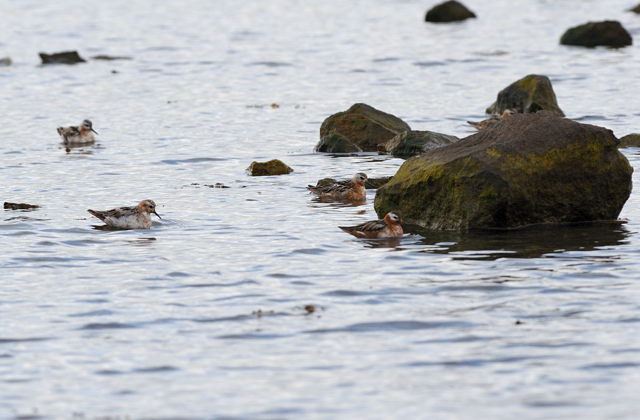Pectoral Sandpiper
Posted: Sun Feb 17, 2013 7:43 pm
279. Pectoral Sandpiper Calidris melanotos (Geelpootstrandloper)
Order: Charadriiformes. Family: Scolopacidae
Description
19-23 cm. Brown scaled upperparts (greyer in non-breeding season) with dark cap to the head. Breast markings streaked with sharp demarcation to the white underparts. It has slightly downcurved bill, and yellow-brown legs. Best told by well-streaked buffy breastband terminating in a sharp line and contrasting with pure white underparts plus a dark crown.
The juveniles are more brightly patterned above with rufous colouration and white mantle stripes.
It is longer-necked than the stints, with a dark-capped appearance and darker upperparts.
Distribution
Breeds at high latitudes in coastal tundra from Taimyr Peninsula, Siberia to the western coast of Hudson Bay, Canada. In the non-breeding season it heads south to South America between 20-40° South, with smaller numbers in east Asia, Australia and New Zealand. It is a rare vagrant to southern Africa, with over the three dozen records spread out across the region (excluding Mozambique), all sighted in the period from September-May. It is most commonly recorded along the west coast of the Western Cape.
Habitat
Estuaries and wetlands with muddy margins, sewage works and small farm dams.
Diet
Arthropods & invertibrates.
Breeding
The Pectoral Sandpiper builds a steep-sided scrape nest with a considerable volume of lining material. The nest is deep enough that the eggs sit about 3 cm below ground level, which helps to minimize heat loss from the cool breezes which occur at the latitudes where the species nests. The female lays four eggs.
Call
Harsh, trilled drrup or jrrff. Listen to Bird Call.
Status
Rare vagrant to the sub-region, summer visitor.
Order: Charadriiformes. Family: Scolopacidae
Description
19-23 cm. Brown scaled upperparts (greyer in non-breeding season) with dark cap to the head. Breast markings streaked with sharp demarcation to the white underparts. It has slightly downcurved bill, and yellow-brown legs. Best told by well-streaked buffy breastband terminating in a sharp line and contrasting with pure white underparts plus a dark crown.
The juveniles are more brightly patterned above with rufous colouration and white mantle stripes.
It is longer-necked than the stints, with a dark-capped appearance and darker upperparts.
Distribution
Breeds at high latitudes in coastal tundra from Taimyr Peninsula, Siberia to the western coast of Hudson Bay, Canada. In the non-breeding season it heads south to South America between 20-40° South, with smaller numbers in east Asia, Australia and New Zealand. It is a rare vagrant to southern Africa, with over the three dozen records spread out across the region (excluding Mozambique), all sighted in the period from September-May. It is most commonly recorded along the west coast of the Western Cape.
Habitat
Estuaries and wetlands with muddy margins, sewage works and small farm dams.
Diet
Arthropods & invertibrates.
Breeding
The Pectoral Sandpiper builds a steep-sided scrape nest with a considerable volume of lining material. The nest is deep enough that the eggs sit about 3 cm below ground level, which helps to minimize heat loss from the cool breezes which occur at the latitudes where the species nests. The female lays four eggs.
Call
Harsh, trilled drrup or jrrff. Listen to Bird Call.
Status
Rare vagrant to the sub-region, summer visitor.

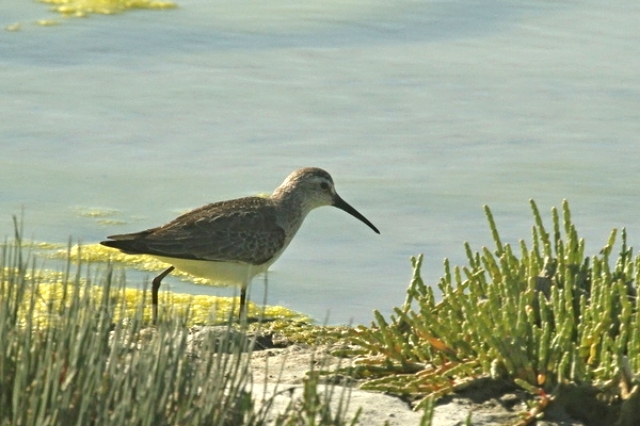
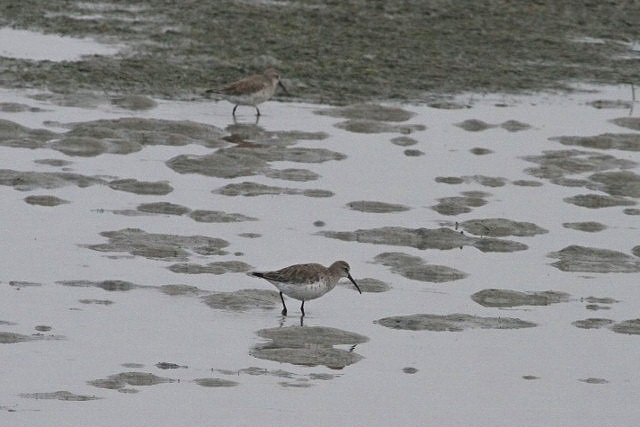
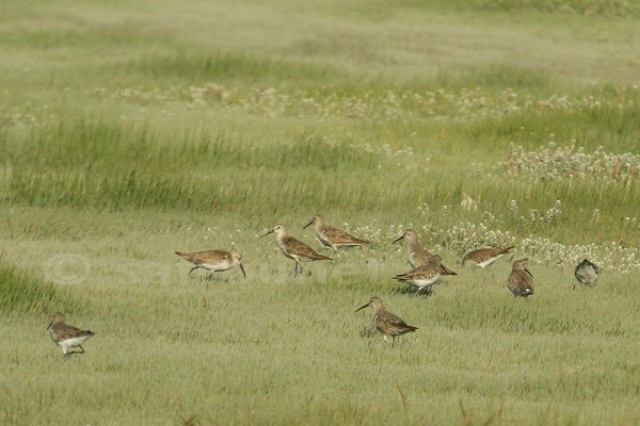
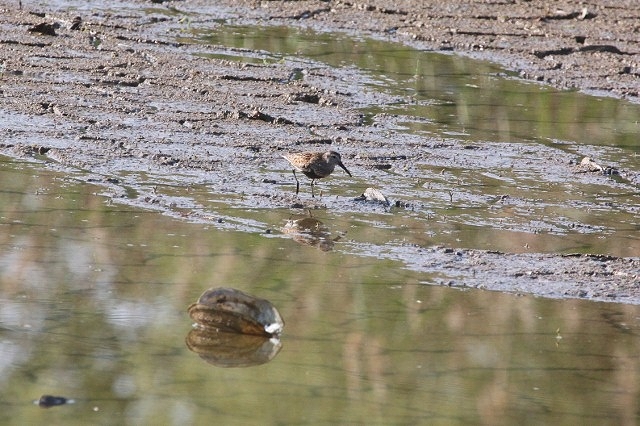

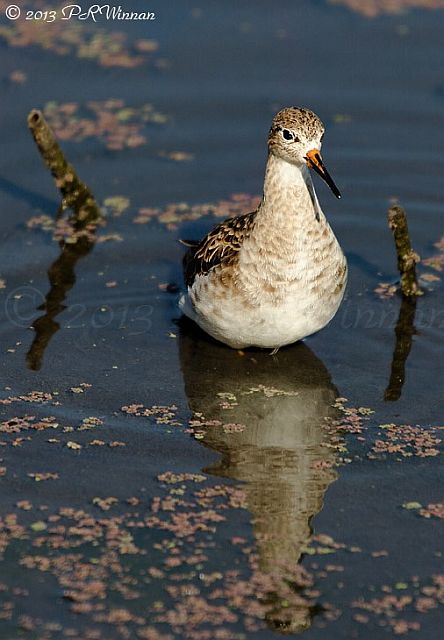 © PRWIN
© PRWIN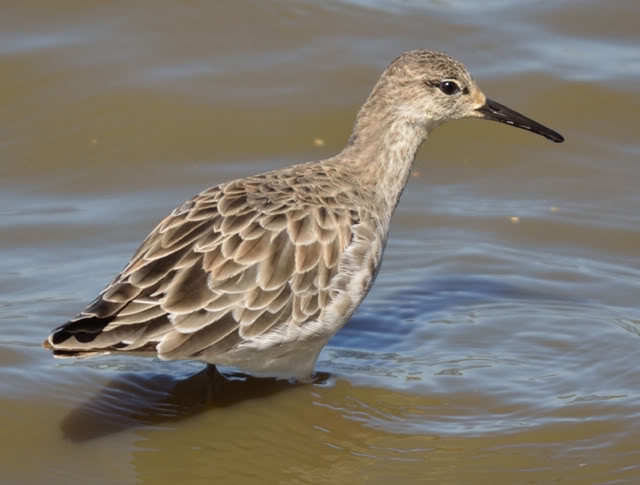 © BluTuna
© BluTuna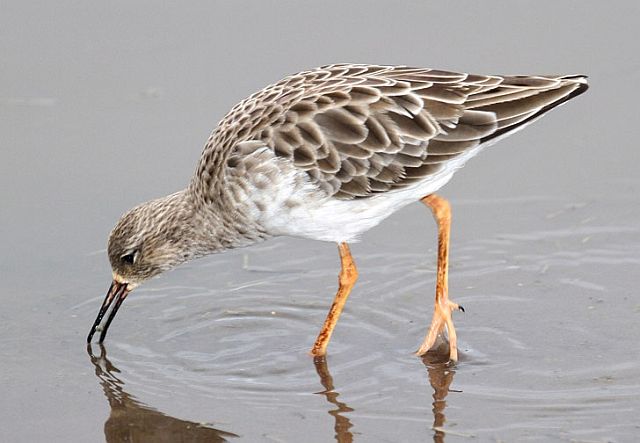 © leachy
© leachy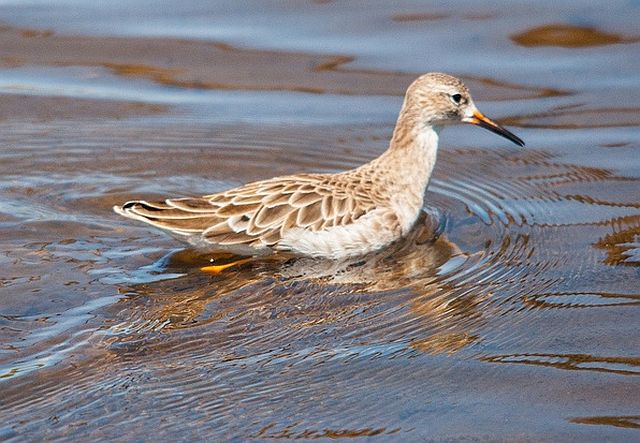 © steamtrainfan
© steamtrainfan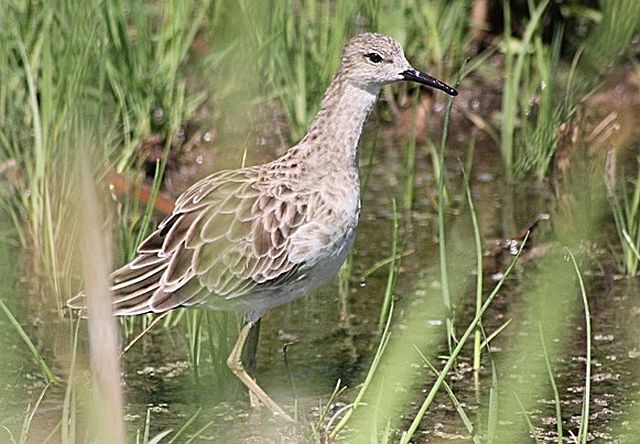 © Amoli
© Amoli © Amoli
© Amoli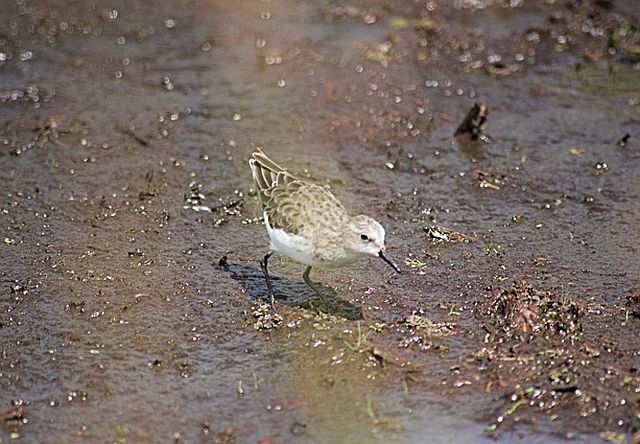 © Amoli
© Amoli